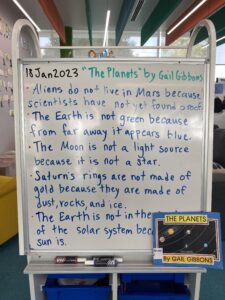100+
Running (like learning) is a step at a time. I’ll begin each post with numbers showing my cumulative distance this year.
On one of my runs, I was struck with a wave of nostalgia about what I was doing a decade ago. I was teaching at an elementary/junior high school in Japan. My students were learning reading, writing, maths, science, and social studies; however, inquiry and reflection were not a part of that school’s culture. For sure, students asked questions and reflected on their progress. Unfortunately, most students reflected individually at home. Contrast that distinction to what we do at ABIS.
Students began an initial inquiry into space and the G5 teachers: Rachel, Khadija, Magz, and I worked with them to start research with robust, open-ended questions. This is as much art in carefully crafting a research question as there is hard work. There were many more more useless, close-ended questions than the questions we have now. Here are three gems. Who owns the moon? What reasons are black holes important? How should we continue exploring space: manned or unmanned projects?
Students constantly reflect on their progress. At the end of many lessons, I use a protocol: Know, Be, Use. What did you learn? What approach to learning helped you do this? What learner profile quality guided your work? For this latest reflection and all those to come, I’ll include these questions as one way to students to transfer their verbal fluency into written expression. It’s just one simple way for us to put IB principles into practice.
As with all learning and teaching (and people-powered adventures), it’s a process. Here are a few photographs of how students distinguished between science facts and science fiction.


